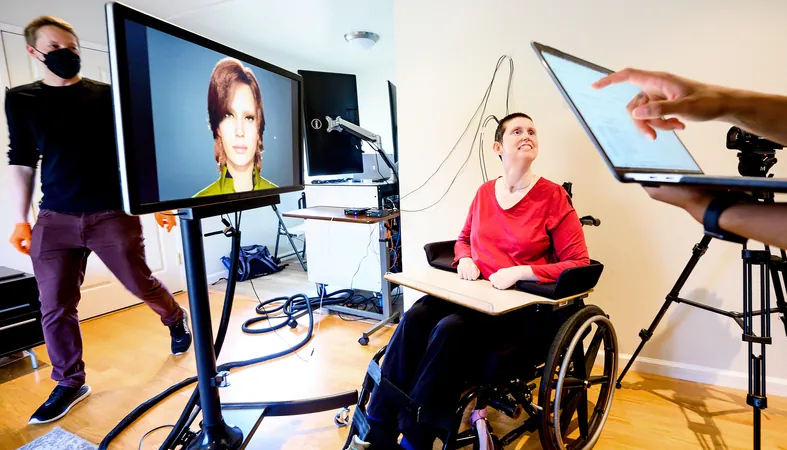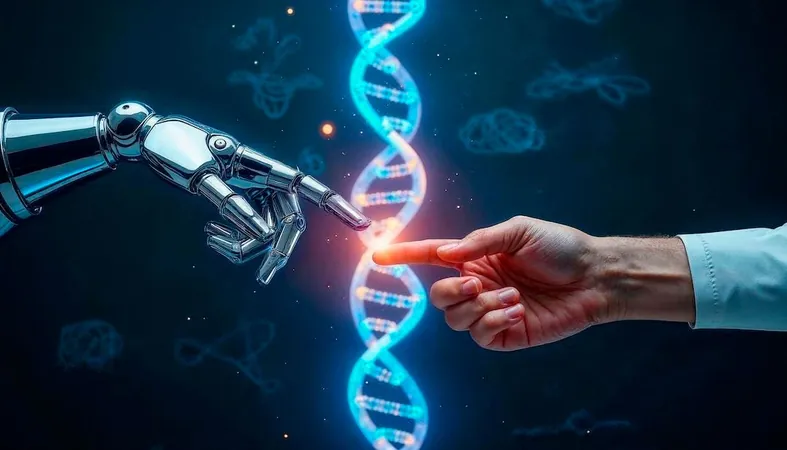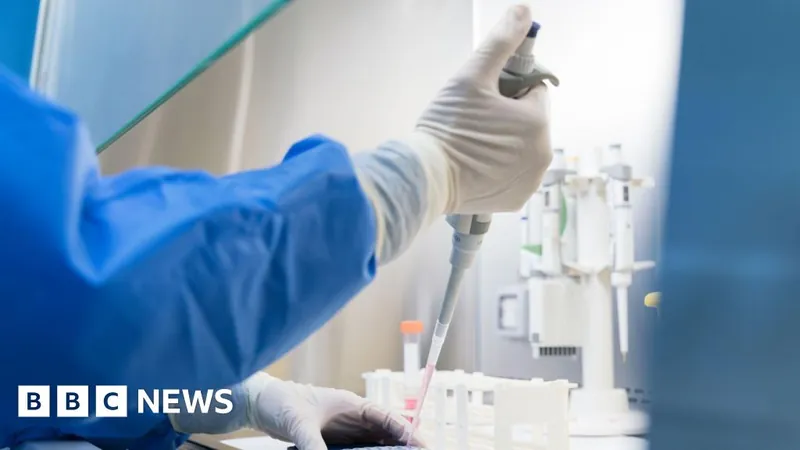
From Silence to Speech: The Miraculous Journey of a Woman's Voice After Stroke
2025-08-13
Author: Jacques
At just 30, Ann Johnson had her life mapped out: a dedicated high school teacher, a passionate coach, and a new mother basking in the joy of her recent wedding. But a seemingly ordinary day in 2005 became a turning point that would change everything when a brainstem stroke struck her while playing volleyball, plunging her into a life-altering condition known as locked-in syndrome.
For nearly two decades, Johnson grappled with near total paralysis, losing not only the ability to move but also the power of speech, communicating only through painstakingly slow methods like an eye-tracking system. Her days turned into an emotional silence, with words trapped within her mind.
A Breakthrough in Communication: The Role of AI
The light at the end of the tunnel appeared in the form of a groundbreaking clinical trial at UC Berkeley and UC San Francisco, aiming to harness brain-computer interfaces to restore speech. Researchers believe this innovative technology could open new doors to accessibility and connection for countless individuals like Johnson.
In 2015, Gopala Anumanchipalli began working with neurosurgeon Edward Chang to decode the mysteries of speech production in the brain. By modeling the brain’s speech signals, they aimed to create a neuroprosthesis that could read the mind's intentions and bypass physical limitations.
An Emotional Reunion with Her Voice
In 2022, Johnson became the trial’s third participant, and the moment she heard her thoughts spoken aloud was nothing short of revelatory. "What do you think of my artificial voice?" she asked, as tears of joy and disbelief filled the room.
The team of researchers carefully crafted a system to translate Johnson's brain activity into words, utilizing AI algorithms that decipher intentions to speak. Unlike traditional voice-activated systems, this neural decoder translates thoughts into speech in real-time, giving Johnson the control she so desperately sought.
The Quest for Realism: Bridging Technology and Humanity
One hurdle remained: the quality of the synthetic voice and responsiveness. When Johnson first used the AI, her words came out fragmented, with delays, but recent advancements have dramatically reduced lag to just one second. This evolution paves the way for more dynamic and lifelike interactions, including avatars that could eventually mirror Johnson's likeness and expressions.
Exciting possibilities lie ahead—in just a few years, photorealistic digital clones could become a reality, allowing for richer communication experiences. Anumanchipalli envisions a future where neuroprostheses are standard care, enabling more individuals to connect meaningfully with the world around them.
Redefining Life with Technology
In February 2024, Ann underwent surgery unrelated to the trial, but her journey with the research team continues. Her thoughts and feedback on her experiences during the trial are paving the way for more refined technologies.
"Disabilities don’t need to stop us or slow us down," she firmly believes, advocating for a future where individuals can communicate effortlessly, aided by advanced technology.
As the boundaries of science and compassion expand, the path to restoration for those silenced by misfortune looks brighter than ever, promising stories like Johnson's will inspire many with hope and resilience.









 Brasil (PT)
Brasil (PT)
 Canada (EN)
Canada (EN)
 Chile (ES)
Chile (ES)
 Česko (CS)
Česko (CS)
 대한민국 (KO)
대한민국 (KO)
 España (ES)
España (ES)
 France (FR)
France (FR)
 Hong Kong (EN)
Hong Kong (EN)
 Italia (IT)
Italia (IT)
 日本 (JA)
日本 (JA)
 Magyarország (HU)
Magyarország (HU)
 Norge (NO)
Norge (NO)
 Polska (PL)
Polska (PL)
 Schweiz (DE)
Schweiz (DE)
 Singapore (EN)
Singapore (EN)
 Sverige (SV)
Sverige (SV)
 Suomi (FI)
Suomi (FI)
 Türkiye (TR)
Türkiye (TR)
 الإمارات العربية المتحدة (AR)
الإمارات العربية المتحدة (AR)